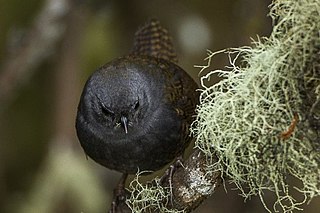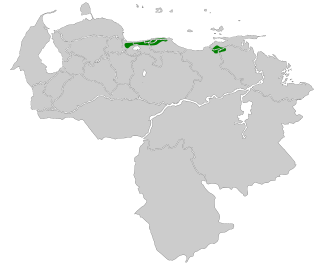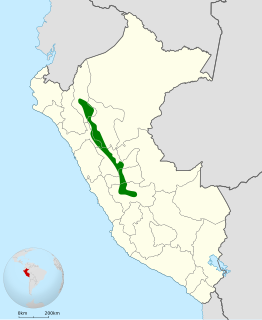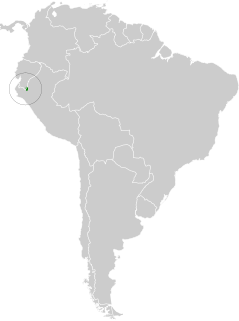
Tschudi's tapaculo is a species of bird in the family Rhinocryptidae. It is endemic to Peru.

The Paramo tapaculo is a species of bird in the family Rhinocryptidae. It is found in the Andes of Ecuador and southern Colombia.

The Caracas tapaculo is a species of bird in the family Rhinocryptidae. It is endemic to Venezuela.

The pale-bellied tapaculo, also known as the matorral tapaculo or rufous-rumped tapaculo, is a species of bird in the family Rhinocryptidae. It is found in Colombia and Venezuela.

The white-breasted tapaculo is a species of bird in the family Rhinocryptidae. It is endemic to the Atlantic forest of southeastern Brazil.

The blackish tapaculo is a species of bird in the family Rhinocryptidae. It is found in Colombia, Ecuador, Peru, and Venezuela.

The large-footed tapaculo is a species of bird in the family Rhinocryptidae. It is endemic to Peru.

The Brasília tapaculo is a species of bird in the family Rhinocryptidae. It is endemic to southern Brazil.

The Tacarcuna tapaculo is a species of bird in the family Rhinocryptidae. It is found in Panama and Colombia.

The Bahia tapaculo is a species of bird in the family Rhinocryptidae. It is endemic to lowland Atlantic forest in Bahia, Brazil.

The Santa Marta tapaculo is a species of bird in the family Rhinocryptidae. It is endemic to the Sierra Nevada de Santa Marta of Colombia.

The mouse-coloured tapaculo or Serra do Mar tapaculo is a species of bird in the family Rhinocryptidae. It is endemic to humid highland forests in southeastern Brazil, where it ranges from southwestern Espírito Santo to northeastern Rio Grande do Sul. Most of its range is in the Serra do Mar, but it also occurs further inland in Paraná and Santa Catarina. Until 2005, the Planalto tapaculo was included in the mouse-coloured tapaculo.

The Planalto tapaculo is a small passerine bird in family Rhinocryptidae. It is found in southeastern Brazil and extreme northeastern Argentina.

The Vilcabamba tapaculo is a small passerine bird in the family Rhinocryptidae. It is endemic to Peru.

The rock tapaculo or Espinhaço tapaculo is a species of bird in the family Rhinocryptidae. It is endemic to altitudes of 900–2,100 metres (3,000–6,900 ft) in the central and southern Espinhaço Mountains, and the Mantiqueira Mountains in Minas Gerais, Brazil, though it may also occur in adjacent parts of Rio de Janeiro and São Paulo. It is found in shrubby and grassy habitats in rocky regions, and in elfin and cloud forest. It closely resembles the Diamantina tapaculo and Planalto tapaculo in appearance and voice.

The Tatama tapaculo is a species of bird in the family Rhinocryptidae. It is endemic to western Colombia.

The Utcubamba tapaculo is a species of bird in the family Rhinocryptidae that the South American Classification Committee of the American Ornithological Society split from blackish tapaculo in July 2020. It is endemic to Peru.

The jalca tapaculo is a species of bird in the family Rhinocryptidae. It is endemic to Peru.

The Ampay tapaculo is a species of bird in the family Rhinocryptidae. It is endemic to Peru.

The Loja tapaculo is a species of bird in the family Rhinocryptidae that the South American Classification Committee of the American Ornithological Society (AOS) accepted as a new species in July 2020. It had been classified as a subspecies of paramo tapaculo. It is found in Ecuador and Peru.






















